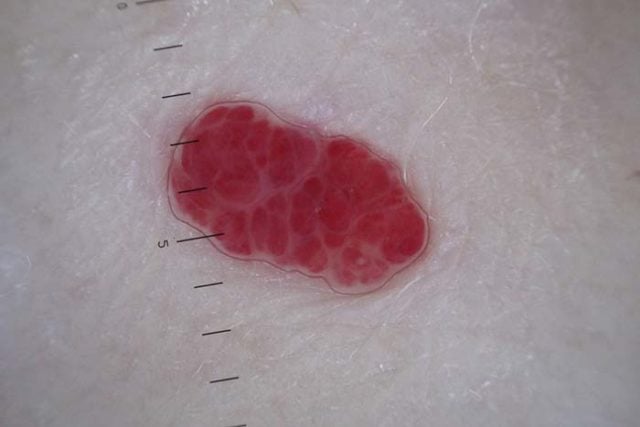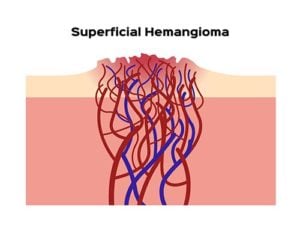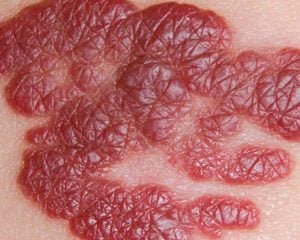
Table of Contents
As a dog owner, you have surely seen a strange lump, blister, or skin change on your pooch at some point. Since we care a lot about our pets, we are often prone to assume the worst-case scenario, but more often than not, those small skin abnormalities are benign and not dangerous.
One of these weird-looking masses sometimes found on dogs is hemangioma. While it can look quite frightening, it is actually curable without lasting consequences, and it's very easy to remove. That doesn’t mean that if you see something out-of-the-ordinary on your dog’s skin, you should dismiss it. When in doubt, always ask your vet for an opinion and follow their advice.
Hemangioma is very widespread in a dog's world. Due to its appearance, it can cause a lot of worry to the dog owners, but they should not be frightened. Let’s see what it is, how it can be prevented and treated.
What is Hemangioma in Dogs?
Hemangioma is a small grouping of blood vessels created by benign neoplasm. It looks like a blister because it is made of endothelial cells which also create blood vessels. However, some vets and scientists disagree with this explanation and define it as a vascular malformation.
Not all dogs have the same chances of developing hemangioma. Breeds that have a lighter skin color and thinner skin have a greater likelihood of getting it. Also, dogs are more prone to hemangioma in the later stages of life, after the middle age. Therefore, if you have a dog which fits into this categorization, pay additional attention to the new lumps which appear on your dog’s skin.
How Does It Look?
Hemangioma can look like a slight lump on your dog’s skin or a nearly flat skin coloration. It can be of different colors, such as pink, red, or black. It is of round shape and you can commonly find it on parts of the body with less hair such as belly and legs.
This is what it can look like up close:
The part of the skin affected by hemangioma is more prone to infections and irritations.
How Serious Is It?
Based on the definition of this disease, we can conclude that it is not particularly serious. However, many dog owners who have read a lot about this skin deformity and saw photos of it become alarmed if they see something similar on their dogs.
This is because hemangioma looks a lot like hemangiosarcoma, which is very different. Hemangiosarcoma is actually a malignant tumor which is incurable and affects cells which line blood vessels. Vets agree that hemangiosarcoma is “the most challenging and mysterious diseases encountered in veterinary practice”. Hemangioma is not that and nowhere near as dangerous.
The difference between hemangioma and hemangiosarcoma is that former has effects only on the surface, while with the latter similar skin mass appears on the skin surface, but only after cancer has affected internal parts of the dog and it is too late to be cured.
Bear in mind that, as frightening as this sounds, statistics show that hemangioma is far more widespread than hemangiosarcoma. If you see a lump or skin coloration on your pooch that looks like this, the odds are in your favor, but you still need to get your dog to the vet to make sure.
How to Prevent It?
Many vets insist that there is no prescribed prevention for hemangioma. On the other hand, it is often advised to let your dog in the house in spring and summer during the hottest periods of the day. If your dog is usually outside all the time, you can put him in a shade.
If your dog is one of those who enjoy sunbathing lying on their back and exposing the belly to the sun, make sure he does that in a cooler spot. You can even try a doggy sunscreen, which may or may not help prevent it.
The best prevention is, as in many other cases, contacting the vet on time. When we are scared for our dog, we want the strange lump to go away on its own quickly, which is not possible in this case. Hemangioma won’t simply disappear if we give it enough time. If you notice something that fits into these symptoms, ask the vet for advice and let him tell you that you can just let it go.
How to Treat Hemangioma in Dogs?
Firstly, the vet will need to do a biopsy to establish whether the lump is benign or malignant.
The treatment for hemangioma is very effective and has very positive predictions. Hemangioma gets removed surgically. Your dog will be under local anesthesia during the biopsy and subsequent removal and won’t be in pain.
Even if hemangioma reoccurs in the later stages of life, it is very rarely in the places where it was initially removed.
Summary
 Hemangioma is a benign skin lump or coloration made of the cells that create blood vessels. It doesn’t mean that every lump you see on your dog falls under this category, but if you notice anything strange on your dog’s skin make it habit to check with a vet.
Hemangioma is a benign skin lump or coloration made of the cells that create blood vessels. It doesn’t mean that every lump you see on your dog falls under this category, but if you notice anything strange on your dog’s skin make it habit to check with a vet.
While many people disregard malformations in their dogs, others worry too much. Due to its similarity to a serious cancer, hemangiosarcoma, hemangioma can cause unnecessary stress for the dog owner.
Remember that the chances are that it is nothing serious. Take your dog for a check-up, and if it is hemangioma, your dog will be cured quickly.
READ NEXT: 9 Ways to Improve Your Dog’s Skin and Coat Health













